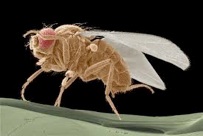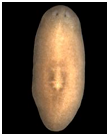Developmental biology is the study of the process by which organisms grow and develop. Modern developmental biology studies the genetic control of cell growth,differentiation and morphogenesis, which is the process that gives rise to tissues, organs and anatomy.
Perspectives
The development of a new life is a spectacular process and represents a masterpiece of temporal and spatial control of gene expression. Developmental genetics studies the effect that genes have in a phenotype, given normal or abnormal epigenetic parameters. The findings of developmental biology can help to understand developmental abnormalities such as chromosomal aberrations that cause Down syndrome. An understanding of the specialization of cells during embryogenesis has provided information on how stem cells specialize into specific tissues and organs. This information has led, for example, to the cloning of specific organs for medical purposes. Another biologically important process that occurs during development is apoptosis—programmed cell death or suicide. Many developmental models are used to elucidate the physiology and molecular basis of this cellular process. Similarly, a deeper understanding of developmental biology can foster greater progress in the treatment of congenital disorders and diseases, e.g. studying human sex determination can lead to treatment for disorders such as congenital adrenal hyperplasia.
Developmental Model Organisms
Often-used model organisms in developmental biology as studied at the CDSB include the following:
 Zebrafish, Danio rerio
Zebrafish, Danio rerio
Frog, Xenopus laevis
Chicken, Gallus gallus
Mouse, Mus musculus
Roundworm, Caenorhabditis elegans
Fruit fly, Drosophila melanogaster
Flat worm, Schmidtea mediterranea
Baker’s yeast, Saccharomyces cerevisiae
Studied Phenomena: Cell Differentiation
Differentiation is the formation of cell types, from what is originally one cell – the zygote or spore. The formation of cell types like nerve cells occurs with a number of intermediary, less differentiated cell types. A cell stays a certain cell type by maintaining a particular pattern of gene expression. This depends on regulatory genes.
Studied Phenomena: Embryonic Development
 Embryogenesis is the step in the life cycle after fertilization – the development of the embryo, starting from the zygote (fertilized egg). Organisms can differ drastically in the how embryo develops, especiallywhen they belong to different phyla. For example, embryonal development in placental mammals starts with cleavage of the zygote into eight uncommitted cells, which then form a ball (morula). The outer cells become thetrophectoderm or trophoblast, which will form in combination with maternal uterine endometrial tissue the placenta, needed for fetal nurturing via maternal blood, while inner cells become the inner cell mass that will form all fetal organs (the bridge between these two parts eventually forms the umbilical cord). In contrast, the fruit fly zygote first forms a sausage-shaped syncytium, which is still one cell but with many cell nuclei.
Embryogenesis is the step in the life cycle after fertilization – the development of the embryo, starting from the zygote (fertilized egg). Organisms can differ drastically in the how embryo develops, especiallywhen they belong to different phyla. For example, embryonal development in placental mammals starts with cleavage of the zygote into eight uncommitted cells, which then form a ball (morula). The outer cells become thetrophectoderm or trophoblast, which will form in combination with maternal uterine endometrial tissue the placenta, needed for fetal nurturing via maternal blood, while inner cells become the inner cell mass that will form all fetal organs (the bridge between these two parts eventually forms the umbilical cord). In contrast, the fruit fly zygote first forms a sausage-shaped syncytium, which is still one cell but with many cell nuclei.
Patterning is important for determining which cells develop into which organs.
 This is mediated by signaling between adjacent cells by proteins on their surfaces, and by gradients of signaling secreted molecules. An example is retinoic acid, which forms a gradient in the head to tail direction in animals. Retinoic acid enters cells and activates Hox genes in a concentration-dependent manner – Hox genes differ in how much retinoic acid they require for activation and will thus show differential rostral expression boundaries, in a colinear fashion with their genomic order. As Hox genes code for transcription factors, this causes different activated combinations of both Hox and other genes in discrete anteroposterior transverse segments of the neural tube (neuromeres) and related patterns in surrounding tissues, such as branchial arches, lateral mesoderm, neural crest, skin and endoderm, in the head to tail direction. This is important for e.g. the segmentation of the spine in vertebrates.
This is mediated by signaling between adjacent cells by proteins on their surfaces, and by gradients of signaling secreted molecules. An example is retinoic acid, which forms a gradient in the head to tail direction in animals. Retinoic acid enters cells and activates Hox genes in a concentration-dependent manner – Hox genes differ in how much retinoic acid they require for activation and will thus show differential rostral expression boundaries, in a colinear fashion with their genomic order. As Hox genes code for transcription factors, this causes different activated combinations of both Hox and other genes in discrete anteroposterior transverse segments of the neural tube (neuromeres) and related patterns in surrounding tissues, such as branchial arches, lateral mesoderm, neural crest, skin and endoderm, in the head to tail direction. This is important for e.g. the segmentation of the spine in vertebrates.
 Embryonic development does not always proceed correctly, and errors can result in birth defects or miscarriage. Often the reason is genetic (mutation or chromosome abnormality), but there can be environmental influence (like teratogens) or stochastic events. Abnormal development caused by mutation is also of evolutionary interest as it provides a mechanism for changes in body plan.
Embryonic development does not always proceed correctly, and errors can result in birth defects or miscarriage. Often the reason is genetic (mutation or chromosome abnormality), but there can be environmental influence (like teratogens) or stochastic events. Abnormal development caused by mutation is also of evolutionary interest as it provides a mechanism for changes in body plan.
Studied Phenomena: Growth
 Growth is the enlargement of a tissue or organism. Growth continues after the embryonal stage, and occurs through cell proliferation, enlargement of cells or accumulation of extracellular material. In plants, growth results in an adult organism that is strikingly different from the embryo. The proliferating cells tend to be distinct from differentiated cells. In some tissues proliferating cells are restricted to specialized areas, such as the growth plates of bones. But some stem cells migrate to where they are needed, such as mesenchymal stem cells which can migrate from the bone marrow to form e.g., muscle, bone or adipose tissue. The size of an organ frequently determines its growth, as in the case of the liver which grows back to its previous size if a part is removed. Growth factors, such as fibroblast growth factors in the animal embryo and growth hormone in juvenile mammals, also control the extent of growth.
Growth is the enlargement of a tissue or organism. Growth continues after the embryonal stage, and occurs through cell proliferation, enlargement of cells or accumulation of extracellular material. In plants, growth results in an adult organism that is strikingly different from the embryo. The proliferating cells tend to be distinct from differentiated cells. In some tissues proliferating cells are restricted to specialized areas, such as the growth plates of bones. But some stem cells migrate to where they are needed, such as mesenchymal stem cells which can migrate from the bone marrow to form e.g., muscle, bone or adipose tissue. The size of an organ frequently determines its growth, as in the case of the liver which grows back to its previous size if a part is removed. Growth factors, such as fibroblast growth factors in the animal embryo and growth hormone in juvenile mammals, also control the extent of growth.
Studied Phenomena: Metamorphosis
 Most animalshave a larval stage, with a body plan different from that of the adult organism. The larva abruptly develops into an adult in a process called metamorphosis. For example, caterpillars (butterfly larvae) are specialized for feeding whereas adult butterflies are specialized for flight and reproduction. When the caterpillar has grown enough, it turns into an immobile pupa and develops from imaginal discs found inside the larva.
Most animalshave a larval stage, with a body plan different from that of the adult organism. The larva abruptly develops into an adult in a process called metamorphosis. For example, caterpillars (butterfly larvae) are specialized for feeding whereas adult butterflies are specialized for flight and reproduction. When the caterpillar has grown enough, it turns into an immobile pupa and develops from imaginal discs found inside the larva.
Studied Phenomena: Regeneration
 Regeneration is the reactivation of development so that a missing body part grows back. This phenomenon has been studied particularly in salamanders, where the adults can reconstruct a whole limb after it has been amputated. Researchers hope to one day be able to induce regeneration in humans. There is little spontaneous regeneration in adult humans, although the liver is a notable exception. Like for salamanders, the regeneration of the liver involves dedifferentiation of some cells to a more embryonal state.
Regeneration is the reactivation of development so that a missing body part grows back. This phenomenon has been studied particularly in salamanders, where the adults can reconstruct a whole limb after it has been amputated. Researchers hope to one day be able to induce regeneration in humans. There is little spontaneous regeneration in adult humans, although the liver is a notable exception. Like for salamanders, the regeneration of the liver involves dedifferentiation of some cells to a more embryonal state.
Developmental systems biology
 Computer simulation of multicellular development is a research methodology to understand the function of the very complex processes involved in the development of organisms. This includes simulation of cell signaling, multi cell interactions and regulatory genomic networks in development of multicellular structures and processes. Minimal genomes for minimal multicellular organisms may pave the way to understand such complex processes in vivo.
Computer simulation of multicellular development is a research methodology to understand the function of the very complex processes involved in the development of organisms. This includes simulation of cell signaling, multi cell interactions and regulatory genomic networks in development of multicellular structures and processes. Minimal genomes for minimal multicellular organisms may pave the way to understand such complex processes in vivo.